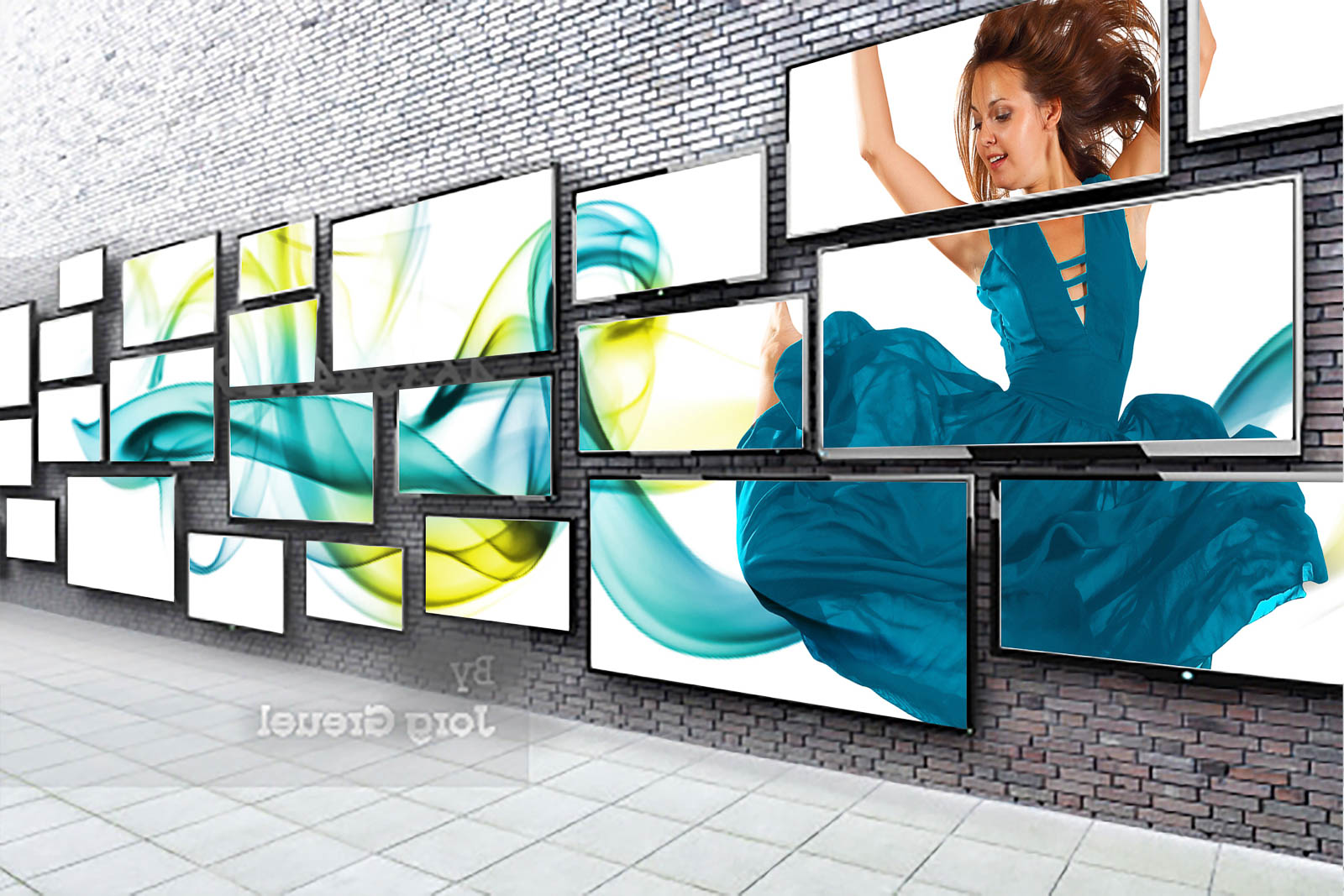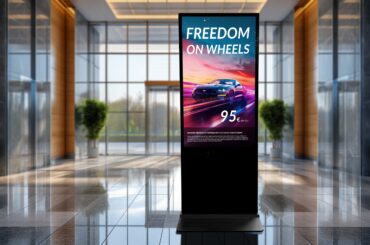The retail industry is feeling pressure from all sides. There are a growing number of competitors, an increased pressure to lower prices, and the encroachment of online shopping. Customers are focused on trying to ensure the lowest price possible, while still demanding great service and high-quality products. If the retail industry is going to survive, it has to focus on ensuring that it is providing a great purchase experience. One of the biggest ways to achieve this is by providing great customer service.
At the same time, the importance of how the retail space is designed and how products are being presented at the point of sale (POS) is increasing continuously. Since stores are replaceable to consumers, the retail industry has to impress with new, unique concepts. This is the only way to gain an edge over the competition. This important factor becomes even more obvious when you think about how many purchase decisions are being made at the actual POS.
Digital Signage solutions offer an innovative way to design a retail space. By using Digital Signage (DS), you can show targeted advertising, informative and entertaining messages on displays, monitors and interactive touchscreens. DS-systems can be placed in the entrance area, the exit or check-out area, to support the product offering, at service stations, in restaurants, or in display windows or even mounted on outside walls. The installation can happen for single businesses, but also for chains or entire shopping centers.
What is Digital Signage?
Digital Signage is a digital display system that can display and help manage multimedia content. The system is based on a software that is being managed in a central location and that distributes the content through a network of hardware (screens). For a complete DS-solution, many components are needed. You need the appropriate hardware and the Digital Signage software, the digital signage player which then displays your content, and lastly the content itself.
The first step is to create multimedia content, like videos, text, graphics or animations. The production can happen through specialized agencies, a good option for complex projects and big chains. Some Digital Signage software providers offer professional templates to create content in-house. Especially for the SEM market.
A predefined communication concept determines how long each piece of content (spots) will be shown in a playlist. Playlists allow you to highlight different messages at different times of the day, in different locations, on one or multiple screens. They are created in the Digital Signage software, so this software should be intuitive to navigate.
In the second step, all content will be distributed to the Digital Signage players (most often via the Cloud or a central server). The players are connected to the corresponding screens and enable the advertising messages to play.
The flexible and immediate broadcast of your content via DS is an important advantage over print media. For instance, messages can be adjusted immediately to work better with the time of day, the day of the week, current weather or competitive situation. You are also flexible to react to unexpected events and make your advertisements more efficient.https://www.youtube.com/embed/Q_dXwFtBEk4?feature=oembed
Digital Signage development factors
Digital Signage is becoming an established media channel in the retail industry, no longer limited to flagship stores. Digital media at the POS offer a promising alternative to adapt and direct the communication with your customers and keep their attention. Why Digital Signage has grown so much in the past years can be explained by three factors:
1. Cheap and POS compatible technology
Over the last years, advances in screen technology have led to continuously decreasing hardware prices. Because screens and monitors are now more affordable, more Digital Signage projects have come up, and a change in pricing is not on the horizon. Another technical driver lies in the advances in data transmission. Since broadband access is available everywhere, highly complex data can be shown on screens at the POS without any lags. These advances have also lowered prices for data transmission so that large DS installations became more economical.
2. Growing importance of POS marketing
As mentioned earlier, the competitive situation in the retail industry is challenging stores to offer an emotional benefit to consumers and to build brand loyalty. This also increases the expectations for more targeted and fitting communication with customers. Instead of a TV spot for hair color treatments, that interrupts the Sunday night movie, advertising in front of the POS for beauty products is more relevant to consumers. Using DS is an important step in building this local, targeted communication with customers. The importance of Digital Signage has been strengthened because the mass medias has lost their relevance more and more.
3. Cost efficient media production
Another factor is the decreasing media production costs. New media formats allow content like videos or animations to be produced and adjusted for less money. The development of content management systems (software) allows for a standardized and professional distribution of content onto the players. Because using Digital Signage is becoming easier and easier, it also becomes more and more attractive to smaller businesses without a lot of technical know-how.
Content concepts and functionalities
Content concepts of any DS network is usually made up of a mix of Advertising, Information and Entertaining messages. Promoting your own services and products will make up most of the content. This mix covers four different functionalities, increase sales, provide information, promote your image and create a great store atmosphere.
Digital Signage works especially well for the function of increasing sales, by showing products spots or animated product information to highlight certain products. It appears that concepts that focus on the consumer’s situation by using the time of day or regionalized information to make the messages more relevant, are more interesting.
Brands have the advantage that they decrease the consumer’s search effort, provide transparency and make the decision making process easier. This means that providing information to customers is very important for the success of a brand. Digital solutions that help provide information have the potential to counteract costumer confusion. This can be achieved by showing a digital list of product offerings, but also by showing the weather forecast, offered services, recipe tips or installation tips.
Digital Signage with the goal of promoting your image can help shape the view of your brand in a positive way. By using messages that set the mood, you can make the shopping experience more esthetically pleasing. Compared to classic print media, Digital Signage can carry vivid messages through videos and high definition images. This is especially interesting for businesses that count on a pleasing shopping experience, so you can find this type of usage first and foremost in brand stores. The screens are being used as part of the decoration, support moods and speak to certain target groups. When it comes to decorative options, you can install video walls, displays in the floor or the ceiling, or use different screen shapes.
What is Digital Signage: A look to the future
In the future, the retail industry has to look at the digital evolution as an opportunity and use it to optimize the customer experience and create brand loyalty through digital services. Digital Signage will become less of a passive medium and more of an interactive communications tool that is inclusive of the consumer.
The interaction between Digital Signage and third party technologies like beacons or NFC technology will become a bridge between the mobile shopping behavior and an interactive shopping experience. Even the rise of the “Internet of Things” shows incredible potential for the usage of Digital Signage. In our daily life, content will be able to adapt to what happens in our surroundings through linked gadgets. This allows retailers a never before seen form of individualization.





